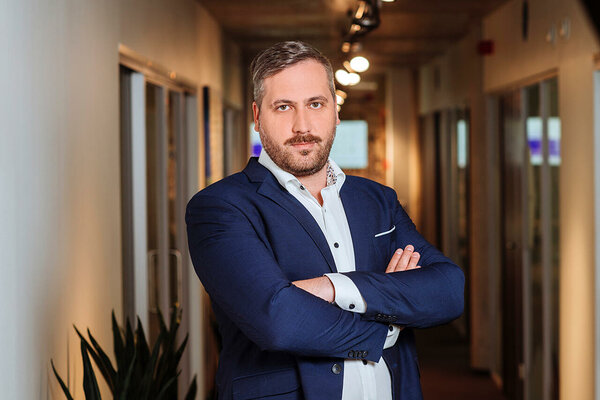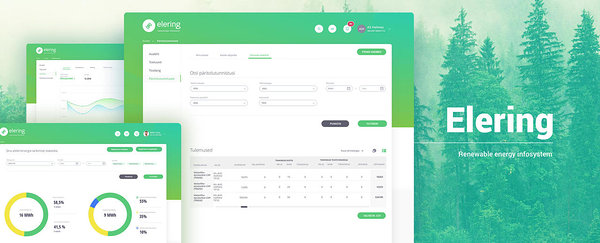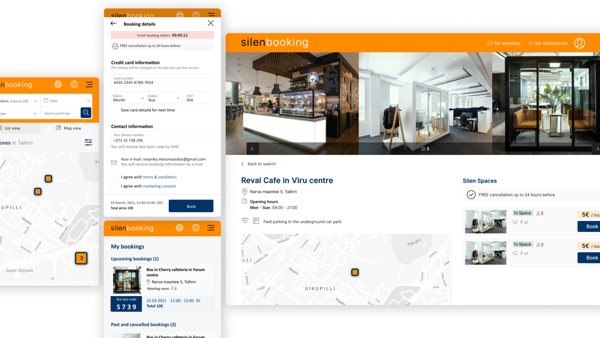Mikk Tasa, Design Lead of Helmes: Openness is Key in the Design Process
Mikk Tasa, Design Lead of Helmes (Photo by Jake Farra)
What is Helmes Design, and what type of design-related challenges do you predominantly work on?
Helmes Design is an independent branch of the software company Helmes, which provides its clients with design-related support for solving problems both big and small, and helps to guide our clients in the right direction, even when they themselves don't see it so clearly yet. As we have evolved from a software company, clients can, in addition to design-related problems, also receive support from our exceptional development teams. Therefore, Helmes Design is the place one turns to for finding the answers to the following steps, regardless of the difficulty of the project, the sector or the specifics of the need.
Our workload includes a wide range of challenges from different sectors and for different target groups. For example, in the public sector, we have built an expert system for the data collectors at Statistics Estonia, and we are currently developing a system to manage the roles of staff and researchers at the European Organization for Nuclear Research (CERN). We have also lent a helping hand to private sector companies, such as DPD, a global logistics giant, and Silen, an Estonian start-up that makes silence booths.
What characterises the work(s) of Helmes, what is your strength?
The inherent strength of Helmes Design is its wide-ranging competence in the context of different services: strategic design, design consulting, the design of proactive government services, overall service design, circular design and many more, which we shape into a single coherent whole according to the specific needs of the client. Therefore, our work is characterised by the ability to scale and adapt quickly, however necessary.
What is the motto that Helmes follows?
We believe that every action and decision we make has an impact... and we are committed to using our skills and knowledge to create a more positive impact on the world.
What is a strength that is particular to you, what is your team like?
Our team is full of innovators who are curious and passionate about developing products and services. While we all share a passion for design, all of us come from different backgrounds. For example, we have a radio program director, a marketing specialist and a former developer on our team. It is precisely our diversity that has contributed significantly to optimal cooperation within our team so far. Everyone brings something new to the table, and thus, everyone complements each other.
Client: Elering
What are the most successful projects of Helmes thus far and why?
Every project is valuable and makes a difference in someone's life, whether focused on digitalisation, process design or innovation in the field. We can take both the individual and the societal impact of the project as one of the metrics. An example that illustrates this would be the Kindergarten Placement Proactive Government Service project, which initially aimed to digitalise the reception of applications for kindergarten placements for all local governments but ended up being much more impactful and fundamental.
In this project, we were able to bring awareness to our client, through empathy, and let them know that the problem that needed solving was, above all, emotional - there were concerns such as whether it would be possible to go back to work and still support the family after the maternity pay ends, what the future will look like, and so on. In the end, besides digitalising the service, we were also able to improve the communication between new parents, family planners, and the state. Specifically, it will be a unique software that will help improve the communication in the future, ensuring that the parents who use the software will know when there is a new kindergarten placement available, and thus, they are able to plan their family’s future plans.
In the end, the project proved to the state that we are at a stage in our country’s digital development where merely digitalising services is no longer enough. Instead, we need emotional design, in order to, so to say, design people’s emotions regarding consumption of services.
What is your main customer profile?
The clients of Helmes Design include, for example, product and service managers, CTOs, development managers and many other specialists who wish for precisely their product or service to be the leading one in their respective sector. Oftentimes, however, they are at a loss when they come to us and genuinely want us to help them find their potential.
Although our clients have been diverse over the years, they have always shared a common desire to do everything in their power to truly make their product better for their customers.
Client: Silenbooking
What is your work process like with your client, from the moment they reach out to you?
The first thing we do is sit down with the client and listen to their concerns. We try to figure out where the problem lies and what it is that the client wishes to improve for their customers. Next, we delve into the client’s work process and the specifics of it, examining whether the problem really lies where the client believes it to or if the aspect that needs improving is still hidden somewhere. This is followed by deciphering and defining the problem, and only then can the designing process begin.
The most important thing for us, above all, is that our client is open with us and not worried about whether they themselves know exactly where the problems lie, and instead trust us to find them.
What do you find most important about design: the concept, ideas, form, problem-solving, or something else?
Any challenge, regardless of its size, can be framed in such a way that at the end of the project it is possible to see clearly how the result of the design process solves it. Thus, design has a tangible and measurable value. But it is essential to understand and use design to make a positive impact through your actions. In our work, we see both of these understandings as equally important. So, in other words, each project, big or small, must ultimately be beneficial to the clients and consumers, but also be beneficial in a broader sense - to society, the ecosystem, and our future.
What aspect of your work will often remain invisible to your client, and what would you wish for them to be able to appreciate?
It may often be the first phase of some projects that remains invisible, the discovery-stage of the Double Diamond process of design, which is an inescapable stage of engineering a design process. We believe that the general understanding of the importance of the discovery stage will change in time, but for that, the design agencies need to put in a lot of work for the clients to be able to open themselves up and perceive the practical potential of design-thinking. This potential can be figuring out a new way to provide a service, finding a new target group or some other outcome according to the client.
What is the ambition of Helmes Design? Where do you see yourselves in five years?
Design, at its core, is positive and curious... yet systematic and thorough at the same time. Technology around us is changing, times and habits change, but people are still people. Unravelling the complexities of human nature and making sense of all the challenges along the way through design - that is, through positive curiosity... through a systemic view - we see ourselves still continuing to solve complex problems in 5, 10, or 15 years and making a positive impact through our actions!
What would you recommend to a client who is looking for a design agency/designer?
A key tip before contacting a design agency/designer is to think through how open you are willing to be when examining and solving your problems. Sometimes, it may seem to the client that designers are able to solve their problems for them, however, that is not the case. The most successful projects are the results of close cooperation and trusting partnerships. That is why the main answer to this question is “openness”.
And lastly... what are some must-have playlists/movies/series/summer festivals that you believe should also reach others?
Speaking of movies, I recommend going to the cinema to see the documentary Smoke Sauna Sisterhood by Anna Hints. Additionally, the Estonian Song Festival will once again take place this summer, and you can certainly find us there.


